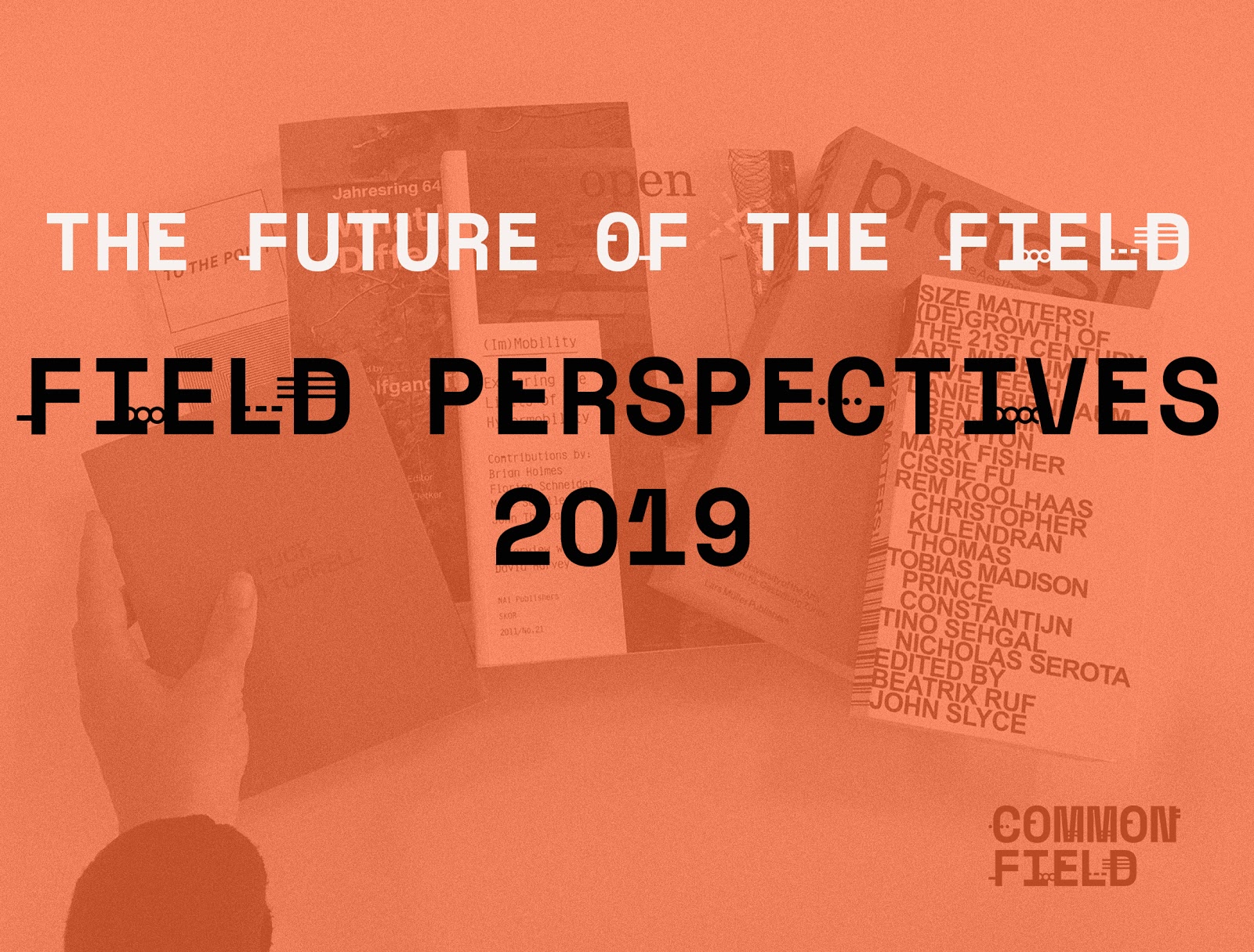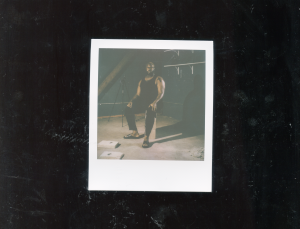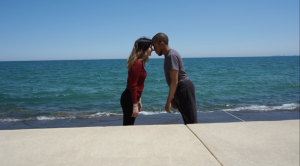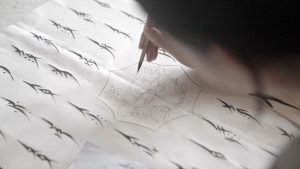This essay was commissioned by Sixty Inches From Center as part of Field Perspectives 2019, a co-publishing initiative organized and supported by Common Field. Field Perspectives 2019 invites thinking that reflects on the future of the artist organizing field. The program is a collaboration between Common Field and nine arts publications and published in two parts. Part 1 includes texts by Chicago Artist Writers, The Rib and Sixty. Part 2 includes texts by BMore Art, Momus, Terremoto, The Third Rail and Title Magazine. Generous support for Field Perspectives is provided by The Andy Warhol Foundation for the Visual Arts.
It seems appropriate to pay homage to comedian and writer Samantha Irby right now. When considering how to start a conversation about advocating for fair pay, illuminating invisible creative labor, and giving advice around ethical compensation practices in the arts, I had a flashback to the November 2017 post, “What the fuck is ‘art’?” on Irby’s blog bitches gotta eat. For an episode of comedian and Broad City actor Abbi Jacobson’s podcast A Piece of Work, Irby was invited to walk through MoMA PS1 in Long Island City, New York and offer up her own brand of commentary on the artworks she was experiencing.
As Irby looked at a piece of text art, this is what was running through her mind:
“i was staring at it waiting for something brilliant to come out of my mouth but all i could formulate was “how much did this dude get paid to make this?” and listen i know the answer is either “one million dollars” or “they paid him in soup” because art is a mystery but i honestly wanted to know.”
While her comment made me laugh, which is no surprise because it’s Samantha Irby after all, I couldn’t help but wonder about the answer to the question. Although Irby was curious about the aesthetic and conceptual effort that went into this work, her question left me much more concerned with whether the artist was ever compensated with dollars for this artwork. Or were they offered some form of “soup” for this piece? And when I say “soup,” I mean any of your favorite non-bill-paying, non-essential-needs-providing, minimal “compensations” that artists often get offered.
In all honesty, there’s no telling what that artist was or wasn’t provided, even though under the criteria of some this artist would be considered successful by simply having their work on view at MoMA PS1. But Irby’s line of inquiry sparks an entirely different set of questions for me around how artists’ labor is understood and acknowledged within the art arenas they are most often asked to lend their talents to, which also impacts how other areas of societies value their work as well. Because of the constant mixed messages, ethical practices around artists’ compensation is a topic that’s persistently in need of reevaluation, interrogation, and advocates in the internal ranks of institutions.
For the sake of my intended audience, I won’t speak about the economy of cultural production that centers art fairs, auction houses, blue chip galleries, major museums, and priceless family collections because they have an economy all their own. Instead, I’m writing this for the artists who, in addition to their particular style of studio practice, hold full-time, part-time, temporary, and contract positions while also holding down other inconsistent jobs that take abbreviated versions of their work and translates it into curricula in classrooms, one-off workshops, creative solutions for well-meaning civic engagement projects, or insightful perspectives on award juries and panels. I’m talking about the artists who are part of the burnout gig economy and precarious freelance culture, both of which come with endless sweat equity donations quietly embedded within them.
But luckily, artists don’t always have to accept what’s offered to them as is, especially if their gut and sense of self-worth are telling them not to. Some useful tools have been released recently that provide a logical and proactive approach for artists when requesting a living wage and compensation for their work. One of the most known tools comes from Working Artists and the Greater Economy (W.A.G.E.), a New York-based advocacy organization that “seeks to establish sustainable economic relationships between artists and the institutions that contract [their] labor, and to introduce mechanisms for self-regulation into the art field that collectively bring about a more equitable distribution of its economy.”
Since 2008, they have been spreading the word on how the theories behind their womanifesto can be put into practice through research, wide distribution of information, and the building of open-source tools that artists can use and apply to their practice and labor. W.A.G.E. even goes so far as to publicly acknowledge organizations that receive W.A.G.E. Certification, which means they are an organization that maintains a commitment to voluntarily paying artists according to W.A.G.E. standards.
Just this fall they released Wagency, a calculator that assesses the range of opportunities presented to artists and the operating budget of the institution that’s requesting their participation in order to draft up a fee for services that prioritizes the autonomy and needs of artists rather than the other way around. With this tool, artists decide when to accept, decline, or negotiate an offer to not only their benefit but the benefit of artists who will come after them.
Similar to W.A.G.E., a-n The Artists Information Company is a membership organization that creates efforts and elevates conversations that seek to improve artists’ livelihoods, affirm artists’ value in society, and informs cultural policy in the United Kingdom. In 2014 they launched the Paying Artists Campaign to assist their 23,000 members in securing fair pay for artists, especially those exhibiting in publicly-funded galleries. Included in this campaign are quick guides for artists to create and negotiate exhibition and proposal agreements, budgets, contracts, and insight on average pay within the sector.
Last year also saw the release of Artists Thrive, another assessment tool that’s been two years in the making. Through a collection of resources and a tool for both artists and institutions, Artists Thrive seeks to increase the collective valuation of artists within the communities and sectors in which they work. The tool includes an elaborate scale that helps artists and organizations measure the progress they’re making toward their goals and how they move closer to a position where they are thriving rather than simply surviving or, worse, opting out altogether.
When I entered this work over a decade ago, I did so with the recognition that curators, administrators, arts writers, and the organizations and institutions they work for wouldn’t have a purpose if not for the artists whose work they build their careers and missions around. It’s such a simple point and seems like common sense (as do many of the cases I’m making), but it all bears repeating.
Rather than preach to the choir of artists who navigate this unsustainable lifestyle on a regular basis, I’d much rather speak to those who design opportunities and urge them to create more equitable scenarios across all of their offerings to artists.
As an independent curator, freelance writer, co-founder of a small nonprofit, and a cultural worker who has concurrently held full-time, part-time and contract positions at city arts agencies, galleries at major universities, arts alliances, a foundation, and other kinds of arts organizations, I’ve experienced, facilitated, and been the creator of a range of artist opportunities. I’ve been screwed over, learned from my own mistakes, and sacrificed my own compensation for the sake of the artists I’ve worked with. Then, while channeling my experiences as a freelance and contract worker, I’ve sat at the brainstorming tables in large, well-resourced institutions and fought for larger stipends, separate material budgets, and additional funds that consider the hidden costs that reduce the payments artists are initially given. From these experiences, I’ve come up with a handful of things that institutional opportunity-makers should add to their list of considerations when working with artists.
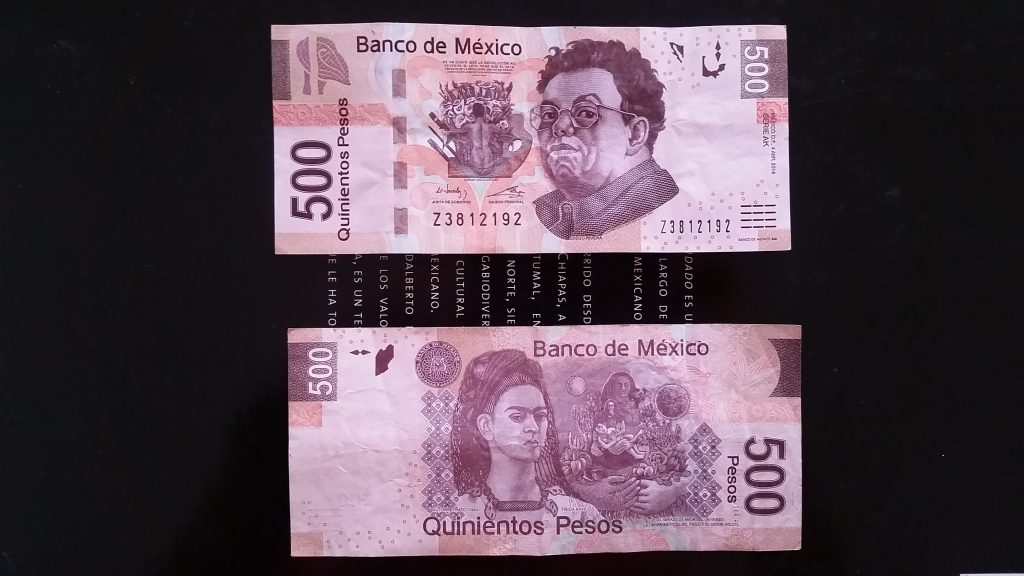
Artists want the same quality-of-life basics as everyone else does. I was being just a little facetious when I said artists gotta eat. But the truth is that they do. And they also gotta have access to the same basic things that everyone else wants in life. Sometimes it’s easy to forget that being an artist doesn’t look like other more traditional career paths that come with cozy health benefits, retirement plans, a consistent paycheck every two weeks, and a company credit card. Instead, the modest stipend you’re offering them for their work is first made smaller with the 20-30% that will go to taxes, then, it is further spread across living expenses, bills, healthcare costs (if they’re lucky), family needs, and perhaps the replenishing of materials that support the progression of their practice. A more equitable way to think about your “modest” stipend is to set a higher, living wage standard for your institution that more accurately weighs the range of costs that go into fulfilling the request that you’re making of artists, especially given the fact that their work usually doesn’t happen in an office or within the 9am to 5pm time frame. These are considerations that anyone in any workforce hopes for.
Time is money, and artists need their money ON TIME. I am a firm believer that it’s a garbage practice for institutions and organizations to take longer than a week to pay an artist after their work has already been done. It’s up there with the garbage practice of asking artists to do things for free or donate their work to a fundraiser, auction, or project that doesn’t directly or clearly benefit them.
In almost no other profession do we allow four weeks or more to pass by without completed work being compensated for. But in the arts, it’s the norm and artists are suffering as a result.
When I’ve argued for artists to be paid up front within my university and city agency positions, it’s often been met with resistance and blames on the seemingly unchangeable red tape of bureaucracy. But this past year I found some success while negotiating the terms for a year-long project with the Terra Foundation for American Art’s Art Design Chicago initiative and Illinois Humanities’ Envisioning Justice initiative where, in both cases, I asked them to pay 75% of the funds up front so that Sixty could then pay writers, editors, filmmakers, audio artists, and other collaborators immediately once they’ve officially signed on to the project.
In cases where a check that takes weeks to be cut is the only option, I’ve come to the event or program that the artist is participating in with the check in hand. In these cases I start the payment process as early as possible in order to ensure swift payment.
With Sixty Inches From Center, we’ve made it normal practice to pay our writers within three days of the work being published, with the exception being holidays or periods when I’m traveling. We do this because while we aren’t yet able to pay our contributors at the rates they deserve, the least we can do is pay them quickly. Photographers get paid upon the delivery of their edited images and receive travel reimbursements when requested. Our editors collectively decided that they would prefer to get paid once a month but always have the option of requesting those funds early should they need them. Collaborators on our major projects or partnerships receive a portion of their funds upon signing of their memorandum of understanding or contract. This isn’t done as an incentive, but more as a recognition that the work begins much earlier and is far more substantial than most post-work payment practices reflect.
Building on the last point, institutions need to take advantage of the variety of payment options at their fingertips and stop solely relying on outdated and complicated ways of processing payments. Venmo, Cash App, and Quickpay. Invoice payments using a credit card or Paypal. These days there are so many ways for money to be exchanged that don’t take weeks or months to land in the hands of artists. If institutions and organizations want to shift the mixed reputations they have with artists on this front, then I would urge them to spend some time rethinking their payment processes. I know it’s much easier said than done, but it’s not impossible. It just takes time, work, and a dedication to the well-being of the artists you seek to celebrate.
Those who decide compensation for artists would benefit from more fully accounting for the hidden costs of artists’ labor. Behind any artwork, performance, or project lies countless seemingly invisible hours of studio time, conceptual development, and lifelong education and information downloads that came before it. Similarly, behind all panel discussions, jury panel service, workshops, or intellectual offerings is a similar kind of hidden preparation and labor that usually isn’t accounted for, which, when the math is done to calculate time spent in relation to the amount given as compensation, often results in artists doing work below minimum wage.
While working for larger institutions or when my curatorial budgets allow, I adjust the scale of projects or how many people I ask to participate so that I can approach artists first by asking them what their rates are rather than starting from an arbitrary number based on rates usually provided by the institution or what I’ve been able to offer in the past. Or, when designing budgets, I will start with artist fees and materials, then work back from there.
Even when I was first starting out and many of the exhibitions and projects I organized had no budget at all, I worked to find a way to clearly show artists my support. Sometimes I took on additional writing gigs to get extra money, which would then be split between the artists and organizers I was working with. Other times I reached out to businesses or folks in my creative community to secure material donations so that artists wouldn’t have to buy all of their supplies out of pocket. I’ve also covered shipping expenses, moving trucks, and a few hours of assistant work for artists. It’s not much, but it’s something that lets artists know that I see and appreciate the extra, unaccounted for contribution they are giving to the project. And it lets them know that I’m working behind the scenes on their behalf and will do so in the future. This means the next time I reach out to them with a new project invitation, they will be more likely to respond with a smile rather than an eye roll.
While this kind of advocacy needs to be woven throughout everything that cultural workers do, I must also acknowledge the fact that it doesn’t always work out so well. I’ve fought for equitable and up-front payments to artists only to have an artist disappear after completing a small part of the promised work, and, in some cases, even ghosting on the work altogether, leaving the project in a financial bind and the reputation of Sixty tarnished. In these instances I’m left questioning if I made the right decision. I’m also left thinking of ways to avoid these situations in the future and wondering whether the reasons why big institutions operate by paying for the work after it’s delivered is because they, too, have been burned. Whatever the case, we shouldn’t let these situations slow down our efforts to make a more equitable arts ecosystem. I hope we carry forward an ethos that’s similar to that of civil rights and suffrage activist Mary Church Turrell who said, “lifting as we climb, onward and upward we go, struggling and striving, and hoping that the buds and blossoms of our desires will burst into glorious fruition ere long.” Because even in the most challenging moments, we must see the success, growth, and evolution of artists and the structures that they work within as a crucial component of our own success–because it is.
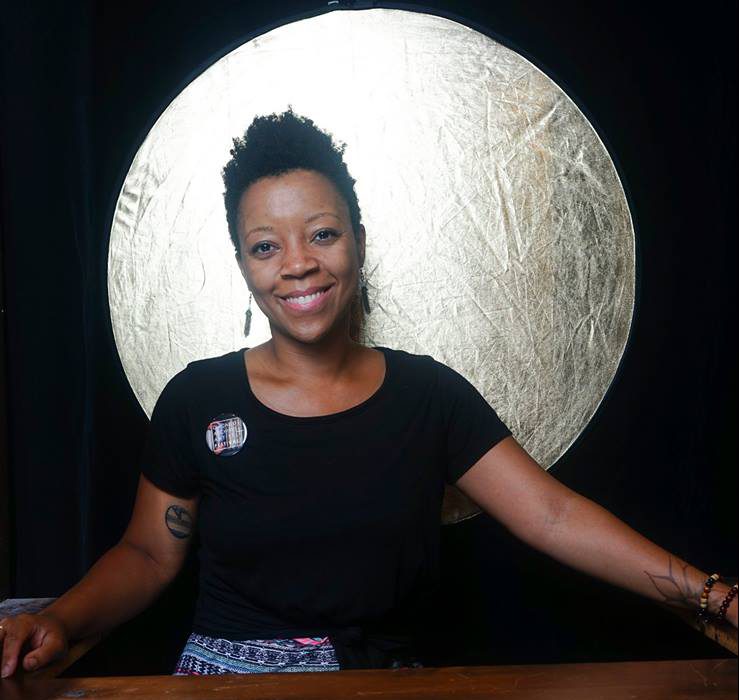 Tempestt Hazel is a curator, writer, and director/co-founder of Sixty Inches From Center. Her writing has been published by Hyde Park Art Center the Broad Museum (Lansing), in Support Networks: Chicago Social Practice History Series, Contact Sheet: Light Work Annual, Unfurling: Explorations In Art, Activism and Archiving, on Artslant, as well as various monographs of artists, including Cecil McDonald, Jr.’s In the Company of Black published by Candor Arts. You can also read her writing in the upcoming Art AIDS America catalogue for Chicago and the online journal Exhibitions on the Cusp by Tremaine Foundation. Find more of her work at tempestthazel.com. Photo by Darryl DeAngelo Terrell.
Tempestt Hazel is a curator, writer, and director/co-founder of Sixty Inches From Center. Her writing has been published by Hyde Park Art Center the Broad Museum (Lansing), in Support Networks: Chicago Social Practice History Series, Contact Sheet: Light Work Annual, Unfurling: Explorations In Art, Activism and Archiving, on Artslant, as well as various monographs of artists, including Cecil McDonald, Jr.’s In the Company of Black published by Candor Arts. You can also read her writing in the upcoming Art AIDS America catalogue for Chicago and the online journal Exhibitions on the Cusp by Tremaine Foundation. Find more of her work at tempestthazel.com. Photo by Darryl DeAngelo Terrell.
